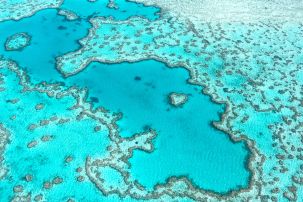Lesson summary
In this activity will work in groups or as a class to research the biotic and abiotic conditions required to support a shallow-water coral reef, and will use this research to create a 3D model of a reef. Students will be asked to work to a design brief and to provide supporting information to accompany their 3D design, and are asked to present their reef and justify their response to the design brief.
Learning intentions:
Students will...
- recognise the range of abiotic and biotic conditions that are required to support a shallow-water coral reef.
- identify coral reef food chains.
- reflect upon the threats to coral reefs from human activities, including climate change.
Lesson guides and printables
Lesson details
Curriculum mapping
Australian Curriculum content descriptions:
Year 9 Science:
- Ecosystems consist of communities of interdependent organisms and abiotic components of the environment; matter and energy flow through these systems (ACSSU176)
- Communicate scientific ideas and information for a particular purpose, including constructing evidence-based arguments and using appropriate scientific language, conventions and representations (ACSIS174)
Syllabus Outcomes: SC5-9WS, SC5-14LW.
Resources required
- Internet access
- Student worksheet
- Materials for 3D model (will vary according to available materials and student requirements).
Additional info
This is an original Cool.org lesson. Facts and figures in these lessons may have changed since this lesson was published. We always endeavour to update our resources in a timely manner, but if you see an error or issue in our resources please get in touch with us.


Welcome back!
Don't have an account yet?
Log in with:
By signing up to Cool.org you consent and agree to Cool's privacy policy to
store, manage and process your personal information. To read more, please see
our privacy policy here(Opens in new tab).
Create your free Cool.org account.
Many of our resources are free, with an option to upgrade to Cool+ for premium content.
Already have an account?
Sign up with:
By signing up to Cool.org you consent and agree to Cool's privacy policy to
store, manage and process your personal information. To read more, please see
our privacy policy here(Opens in new tab).